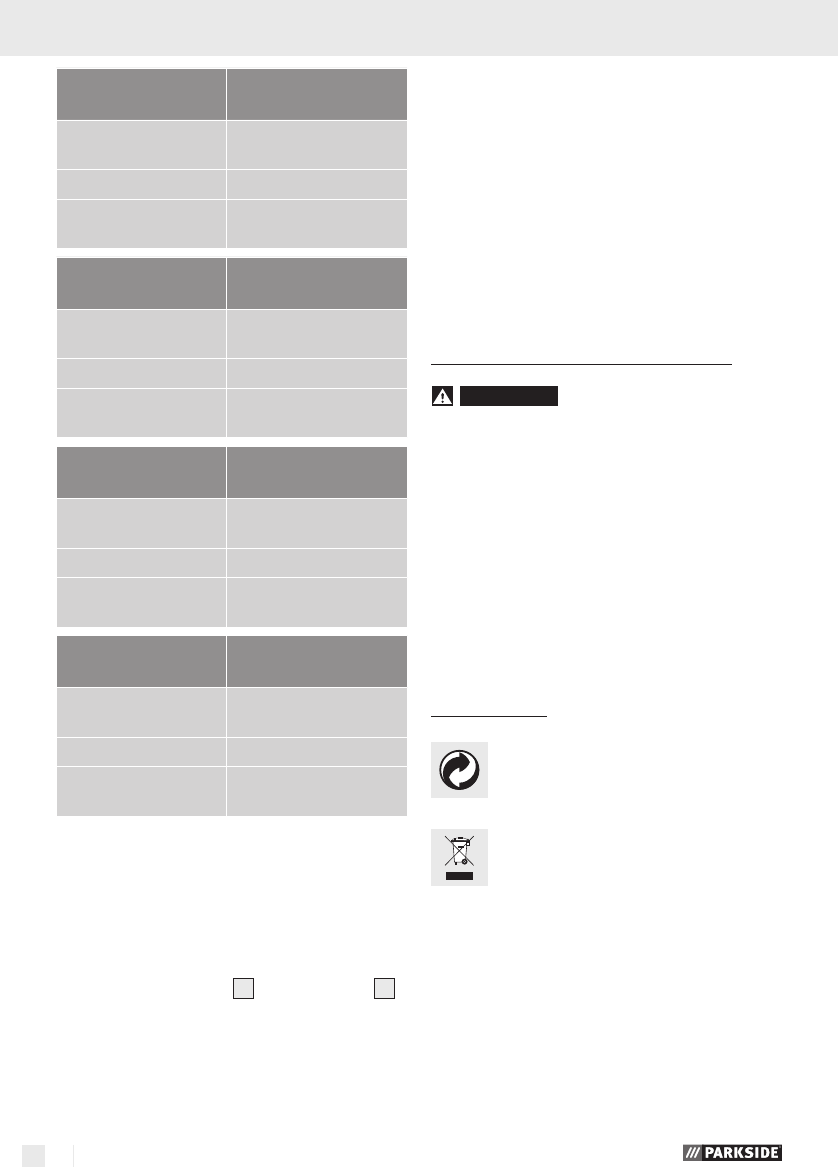
12 GB/IE/CY
Material / type of
work
Sanding varnish
Coarse finish
(Grit grade)
150
Fine finish (Grit grade) 320
Preselected rotation
speed
low (1-2)
Material / type of
work
Rust removal
Coarse finish
(Grit grade)
40
Fine finish (Grit grade) 120
Preselected rotation
speed
medium / high (3-4)
Material / type of
work
Plastic
Coarse finish
(Grit grade)
120
Fine finish (Grit grade) 240
Preselected rotation
speed
low / medium (2-3)
Material / type of
work
Non-ferrous metals
(e.g. aluminium)
Coarse finish
(Grit grade)
80
Fine finish (Grit grade) 150
Preselected rotation
speed
medium / high (3-4)
Q
Using the device in
a fixed mounting
j Turn the electrical power tool upside down as
shown in Figures D, F and place it on a stable
working surface.
j Insert the two clamps
11
into the recesses
2
provided for this purpose and clamp the electri-
cal power tool securely down on to the surface.
Q
Tips and tricks
j Never use the same sanding belt to sand wood
and metal.
j Worn or ripped sanding belts can damage
the workpiece. Change sanding belts at the
appropriate time.
j Keep the sanding belt properly tensioned so
that it does not hang down too much and
become unusable due to nicks, creases etc.
Q
Maintenance and cleaning
WARNING!
Before you carry out any work
on the belt sander always pull the mains plug out
of the mains socket.
The belt sander is designed to be maintenance-free.
j Clean the device frequently. This should be done
immediately after you have finished using it.
j Use a dry cloth to clean the device - never use
petrol, solvents or cleaners that attack plastic.
j Always keep the ventilation slots clear.
j Remove any adhering dust with a narrow
paint brush.
Q
Disposal
The packaging is wholly composed of
environmentally-friendly materials that can
be disposed of at a local recycling centre.
Do not dispose of electrical
power tools with the household
rubbish!
In accordance with European Directive
2002 / 96 / EC (covering waste electrical and elec-
tronic equipment) and its transposition into national
legislation, worn out electrical power tools must be
collected separately and taken for environmentally
compatible recycling.
Contact your local refuse disposal authority for
more details of how to dispose of your worn out
electrical devices.
Operation / Maintenance and cleaning / Disposal
30176_Bandschleifer_Content_LB6.indd 12 03.04.09 08:58















